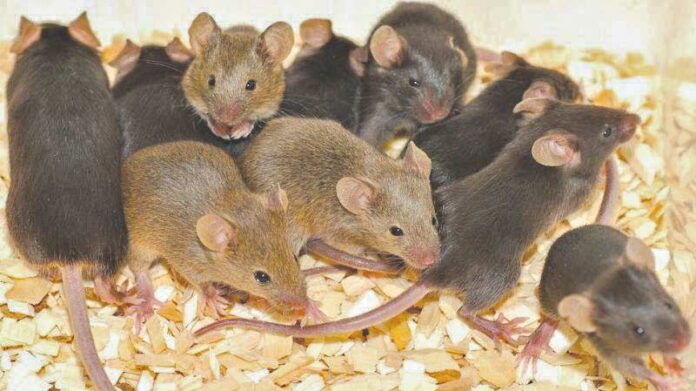
IF you’ve spotted a mouse or two around lately, or found baits and traps hard to come by, you’re not alone.
Many people have reported an increase of mice on their properties and with a confirmed plague in NSW and QLD following flooding, it seems as though some extras have found their way down to us being under an hour from the border.
However, we are not facing mice in the same numbers as other states, according to Agriculture Victoria.
“We are aware there some parts of the state where there are currently increased numbers of mice, however there is no current information to suggest there is a widespread mouse problem across Victoria,” said Agriculture Victoria Manager Natural Disasters And Emergencies, Banjo Patterson.
“Agriculture Victoria is closely monitoring the situation and supporting farmers with management advice. If farmers are concerned about mice numbers there are commercial baits available.”
Australia’s mice plagues are a matter of record. The worst recorded mice plague occurred in 1993 in NSW with an estimated cost of $96M. Another plague in 2010/11 brought a multi-million cost to farmers with the mice plague covering an area of three million square kms.
Mice numbers can build up over a two-year life cycle, which is helped by good food sources and mild weather conditions and increased mice numbers can occur at this time of the year.
According to the CSIRO, when a breeding pair of mice emerge after laying low through the drought and the rain, they can produce an extended total of 500 offspring in a season. With this year’s explosion of numbers (only confirmed in QLD and NSW), country towns in particular are running drastically short of mouse baits and traps as farmers battle the onslaught.
Residual mice populations will also start to move closer to domestic residences and sheds once it becomes colder, wetter and feed outside drops off. Ongoing monitoring and management by landholders is always important to ensure mice numbers remain low and don’t build up and become uncontrollable.
Mouse traps or baits should be used to control mice, however extreme care should be exercised with baits in areas where young children or pets frequent and product label directions should always be adhered to.
For more information on mice management, visit https://agriculture.vic.gov.au/biosecurity/pest-animals/priority-pest-animals/house-mouse.





